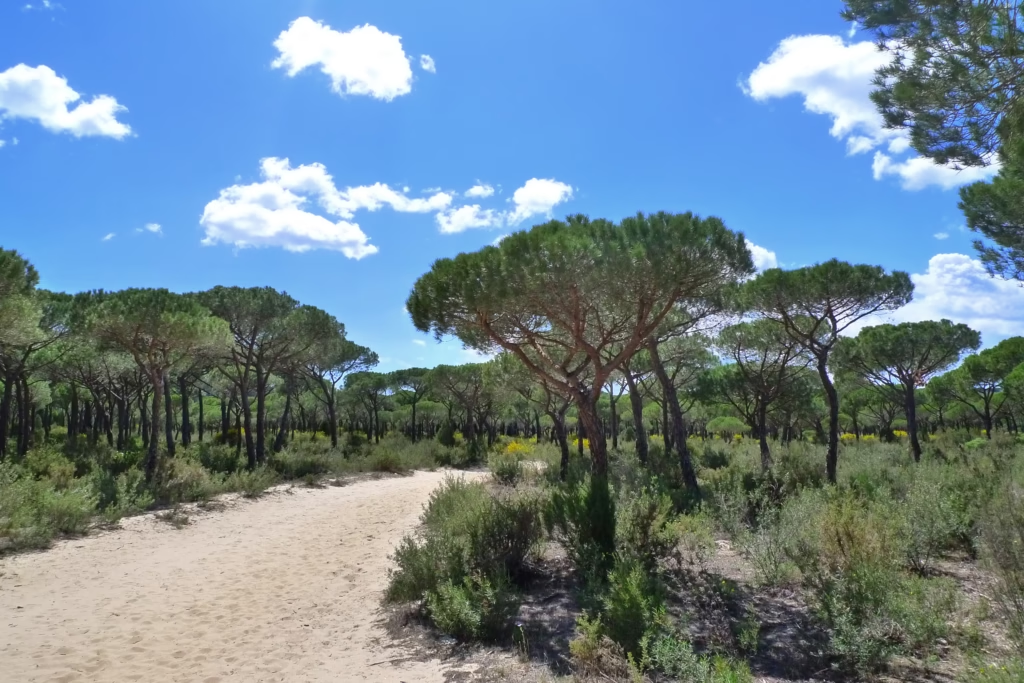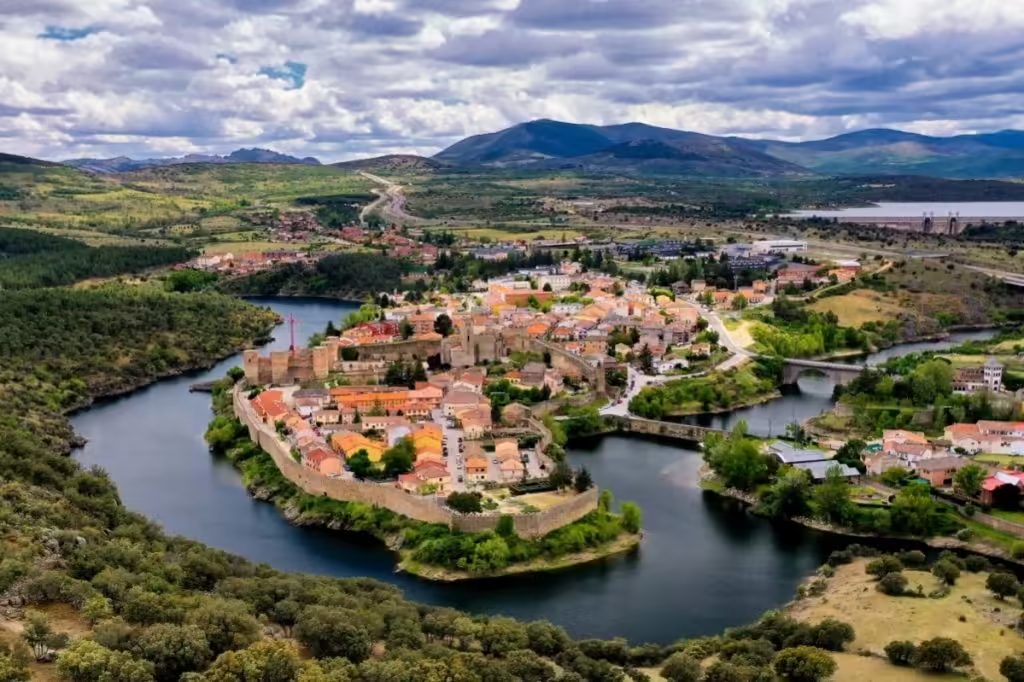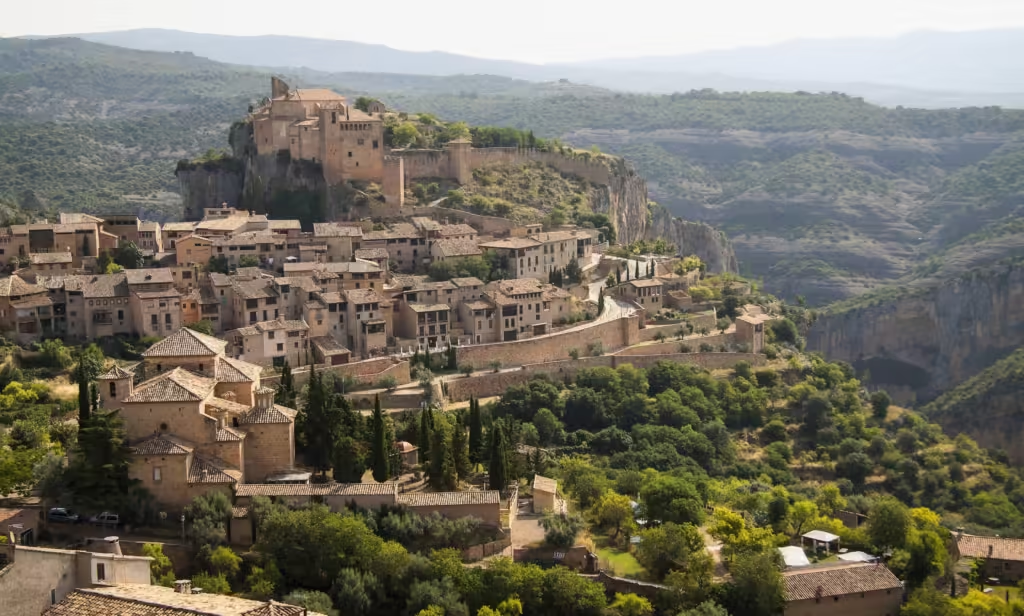Donana National Park stands out as one of Spain’s most treasured natural wonders. This vast wetland ecosystem in Andalusia offers an unforgettable experience for nature lovers, photographers, and adventure seekers. The park boasts pristine marshes, coastal dunes, and serene lagoons teeming with wildlife. It serves as a vital refuge for many rare species, including the elusive Iberian lynx and the majestic Spanish imperial eagle. Donana’s mix of habitats and diverse flora makes it a UNESCO World Heritage Site. If you’re seeking an eco-tourism destination that combines breathtaking landscapes, rich history, and abundant wildlife, Donana National Park is the place to be.

Location and Accessibility – How to Get to Donana National Park
Donana National Park lies in southwestern Spain. It spans parts of the provinces of Huelva, Seville, and Cadiz. The park is about an hour’s drive from Seville, making it a popular day trip for many travelers. You can reach the park by private car, guided tour bus, or public transport. If you prefer flexibility, renting a car is a good option. Several highways connect Seville to the nearby towns of El Rocío and Matalascañas. These towns serve as gateways to the national park.
The most convenient option for many visitors is to join an organized tour. Tour operators often provide knowledgeable guides and specialized vehicles suited for off-road terrain. Public buses also run between Seville and Matalascañas, although less frequently. If you plan to use public transport, check the timetable in advance. Early planning helps ensure you have ample time to explore the park’s diverse areas without rushing.
Donana’s Ecological Richness – A Paradise for Wildlife Enthusiasts
The ecological significance of Donana National Park is remarkable. This nature reserve protects one of Europe’s most important wetlands. Birds from across Europe and Africa migrate here, finding refuge in its marshes and lagoons. More than 300 species of birds have been recorded in the park. Pink flamingos congregate in shallow lagoons, while storks, herons, and spoonbills feed in expansive marshlands.
Beyond birds, Donana hosts fascinating mammals. The elusive Iberian lynx roams the park’s scrublands. Conservation efforts have helped its population increase in recent years, but sightings remain rare. The Spanish imperial eagle is another sought-after species. Nature enthusiasts also watch out for wild boars, red deer, and even small reptiles. Donana’s biodiversity arises from a mosaic of habitats, including dune systems, pine forests, and coastal beaches.
Best Time to Visit – Seasonal Highlights for Every Traveler
Choosing the right time to visit Donana National Park can enhance your experience. Spring (March to May) brings mild temperatures and abundant floral blooms. During this season, migratory birds arrive in large flocks, creating prime opportunities for birdwatching. The park is lush and vibrant. Wildflowers flourish, painting the landscape in bright colors.
Summer (June to August) can be hot and dry. However, wildlife sightings remain plentiful, especially during early mornings or late afternoons. If you visit in summer, consider guided 4×4 tours. These tours let you observe wildlife from a comfortable, shaded vehicle. Autumn (September to November) features moderate weather with fewer crowds. Many bird species prepare for their migration back to Africa, making it a spectacular sight for avid birdwatchers.
Winter (December to February) offers cooler temperatures and a quieter ambiance. Rainfall can be frequent, filling the marshes with water. This recharges the wetlands and supports the park’s delicate ecosystem. Although some services may have limited schedules, winter remains rewarding for those seeking solitude and unique photographic conditions.
Activities and Tours – Exploring Donana National Park Your Way
Guided 4×4 Tours
One of the most popular ways to discover Donana National Park is through guided 4×4 tours. These tours traverse sandy dunes, forest trails, and marshy paths. Trained guides offer insights into the park’s natural history. You’ll learn about the fragile habitats and the ongoing conservation efforts to protect endangered wildlife. Some tours even use specialized vehicles that minimize environmental impact.
Birdwatching Excursions
Birdwatching ranks high among the top activities in Donana. Many tour operators offer specific birding packages, where expert guides help you spot rare species. You’ll likely see flamingos feeding in shallow lagoons or large flocks of geese taking flight. Bring your binoculars and camera. Patience is key, and so is silence. Quiet observation improves your chances of capturing that perfect moment when an iconic bird spreads its wings.
Hiking and Nature Trails
Donana’s diverse ecosystems can also be explored on foot. Several marked trails wind through pine forests, coastal dunes, and wetland edges. These trails are usually well-maintained and vary in length. You can choose shorter routes suited for families or embark on longer treks if you’re a seasoned hiker. Along the way, interpretive signs explain the local flora and fauna. Take your time and soak in the tranquil atmosphere.
Horseback Riding
Another memorable way to experience Donana is on horseback. Guided rides typically depart from El Rocío, a quaint town known for its sandy streets and annual pilgrimages. You’ll trot along the edges of wetlands and maybe catch glimpses of deer or wild boar. Horseback riding offers a slower pace of travel that lets you immerse yourself in the environment. It’s also a nod to traditional Andalusian culture.
Conservation Significance – Protecting a UNESCO World Heritage Site
Donana National Park is a UNESCO World Heritage Site for good reason. It safeguards crucial habitats for migratory birds traveling between Europe and Africa. Conservation organizations work tirelessly to address issues such as water pollution and habitat fragmentation. Strict visitor regulations aim to limit human impact on sensitive areas of the park. Fishing, hunting, and off-trail access are generally restricted.
The park faces ongoing challenges, including water management. Agricultural demands and climate change can affect the wetlands’ water supply. By following designated paths and adhering to park rules, visitors help preserve this fragile ecosystem. Responsible tourism plays a key role in maintaining Donana’s ecological integrity. When you visit, respect wildlife, avoid littering, and support local conservation initiatives whenever possible.
Nearby Attractions – Extend Your Andalusian Adventure
El Rocío Village
El Rocío is famous for its annual pilgrimage, the Romería del Rocío, which draws thousands of devotees. The village’s sandy streets and white-washed buildings offer a charming contrast to the wetlands nearby. Visitors enjoy strolling around the local hermitage and observing the town’s unique cowboy culture. If you’re in the area during the pilgrimage, expect a lively and colorful atmosphere.
Matalascañas Beach
Matalascañas offers a refreshing coastal escape after a day spent in the park. The beach is popular for swimming and sunbathing, especially during summer. Several restaurants line the shore, serving fresh seafood and regional delicacies. You can also try water sports like windsurfing or kayaking. From Matalascañas, you can see the iconic Torre de la Higuera, a ruined watchtower that stands as a local landmark.
Seville and Beyond
If time permits, continue your journey to Seville. This vibrant city lies just over an hour away by car. Explore Seville’s famous Alcázar, a Moorish palace with exquisite gardens. Admire the Giralda, the iconic bell tower of the Seville Cathedral. Discover authentic Flamenco shows, and treat yourself to tapas in bustling bars. Andalusia’s capital is a cultural feast that complements the natural beauty of Donana.
Accommodation Options – Stay Close to Nature
Lodging choices near Donana National Park cater to different budgets and preferences. You’ll find hotels, rural guesthouses, and campgrounds. El Rocío offers several charming rural accommodations. Many provide easy access to the park’s visitor centers. If you prefer modern amenities, Matalascañas has beach hotels with scenic views of the Atlantic coast. To immerse yourself in nature, some farms and estates offer eco-friendly lodging. These rural stays often focus on sustainable practices, such as using solar power or sourcing local produce.
Booking in advance is advisable, especially during peak seasons. Some rural guesthouses have limited rooms and high demand. If you plan to visit in spring when bird migration peaks, confirm your reservation early. This ensures you can stay within a short distance of the park entrance. Rest well and rise early for the best wildlife-viewing opportunities.
Practical Tips for Visiting – Make the Most of Your Trip
Plan Ahead: Research the park’s regulations and operating hours. Some areas require special permits or guided tours.
Bring Essentials: Carry binoculars, a camera with a good zoom, sunscreen, insect repellent, and plenty of water. Comfortable shoes and layered clothing are recommended.
Follow Park Rules: Stick to marked trails and respect wildlife. Keep noise levels down, so animals are not disturbed.
Respect Local Culture: Learn a few Spanish phrases to communicate with locals. Be mindful of religious traditions if you visit El Rocío.
Stay Safe: Check weather forecasts before venturing into the wetlands. Paths can become muddy or flooded after heavy rains.
Sustainable Tourism: Support local businesses that prioritize eco-friendly practices. By doing so, you contribute to the conservation of Donana’s unique ecosystems.
Frequently Asked Questions (FAQ) About Donana National Park
1. Is Donana National Park open all year round?
Yes, the park remains open throughout the year. However, some visitor centers and tour operators may have reduced hours in winter. Always check local schedules to ensure a smooth visit.
2. Can I visit Donana National Park without a guided tour?
You can explore certain areas on foot via designated trails. Yet, a guided tour, especially a 4×4 safari, offers access to restricted zones and specialized insights into wildlife behavior.
3. What wildlife am I most likely to see?
Birdlife is abundant, especially flamingos, storks, and spoonbills. If you’re lucky, you might spot an Iberian lynx or a Spanish imperial eagle. Deer, wild boar, and reptiles also inhabit the park.
4. How many days do I need to explore the park?
A full-day visit covers the main highlights, but spending two or three days allows a deeper exploration. Multiple visits increase your chances of spotting rare wildlife in various habitats.
5. Is there a fee to enter Donana National Park?
Most visitor centers and walking trails are free. However, guided 4×4 tours and specialized excursions come at varying costs. Prices depend on the route and tour operator.
6. Are there restaurants or cafes inside the park?
Facilities within the park are limited to small visitor centers. Many people choose to eat in nearby towns like El Rocío or Matalascañas. Packing snacks or a light meal is a good idea for those spending extended hours in nature.
7. What languages are the tours conducted in?
Many tours are offered in Spanish. Some operators also provide guides who speak English and other languages. It’s best to inquire when booking.
8. Is Donana National Park family-friendly?
Yes, families can enjoy shorter walking routes or opt for a gentle 4×4 tour. Children often delight in birdwatching and spotting deer or wild boar. Just remember to prepare for varying weather conditions.
Conclusion – Embrace the Natural Wonders of Donana National Park
Donana National Park stands as a testament to Spain’s extraordinary natural heritage. Its wetlands host crucial migratory routes for birds crossing continents, while dense scrublands shelter the critically endangered Iberian lynx. Visiting Donana offers a chance to appreciate the delicate balance between conservation and sustainable tourism. Each season reveals different facets of the park’s beauty. Whether you come for a day trip from Seville or dedicate several days to exploring every corner, Donana promises a transformative experience. Immerse yourself in the park’s serene landscapes, observe its vibrant wildlife, and join the collective effort to protect one of Europe’s most precious natural treasures.
By following this guide, you’ll be well-prepared for an unforgettable adventure. Respect local customs, tread lightly on the land, and savor each moment in Donana’s pristine environment. Your visit not only enriches your travel memories but also contributes to preserving a sanctuary that future generations deserve to explore. Safe travels, and enjoy your journey into the heart of Donana National Park!

